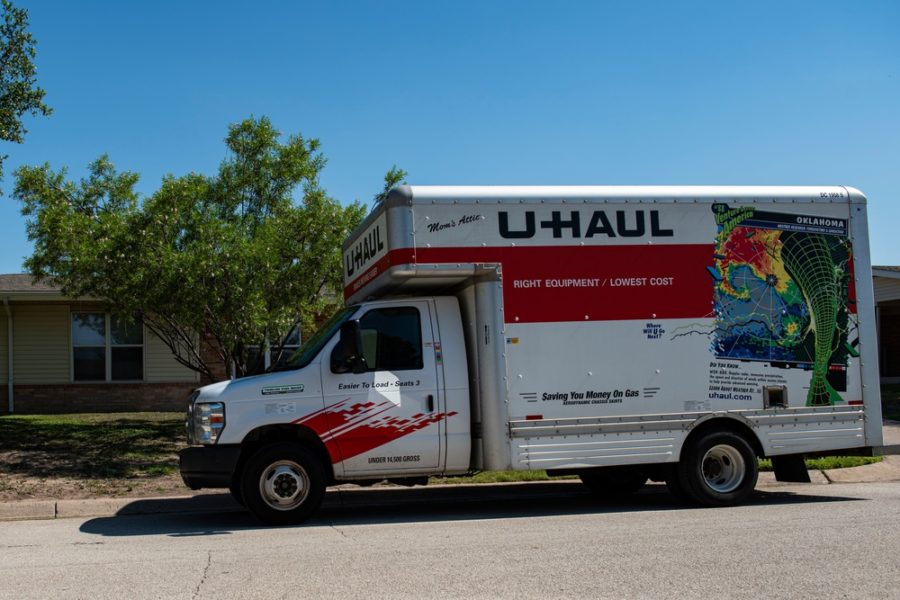The Department of the Air Force is reverting to its old relocation system for some Airmen and Guardians who face problems with the new system’s rocky rollout.
The switch, which took effect June 1, affects troops who organize their own permanent changes of station, known as “do-it-yourself” or “personally procured” moves. Service members may see greater reimbursement and lower out-of-pocket expenses under the legacy defense personal property system, the office overseeing Air Force moves wrote in an email that was posted on the advocate-run “PCS Like a Pro” Facebook page June 10.
But the change comes amid other complications at the start of the busy summer PCS season. Some Air Force and Space Force families have seen their moves delayed until mid-July or later because moving companies don’t have the capacity to take them earlier under the old system, PCS reform advocate Megan Harless told Air & Space Forces Magazine.
Still, “a lot of people are excited” about reverting to the old system, said Harless, a military spouse and Army veteran who runs the website PCSLikeaPro.org. The update may help some people break even on their moving expenses, she added. Harless has produced PCS guides on social media and done paid consulting work for some moving companies, one of which is involved in ongoing litigation connected to a military moving contract.
The problem stems from a 2021 contract worth $6.2 billion that put a single contractor, HomeSafe Alliance, in charge of the hundreds of movers in the PCS enterprise. The new contract sought to fix longstanding problems with military relocations by giving troops a single point of contact during their move, as well as the ability to manage and track their shipments online.
U.S. Transportation Command aimed to use the new system for all moves within the continental U.S. this spring. But advocates and lawmakers reported delays, missed pickups, and higher out-of-pocket costs as bases around the country phased in the new option.
Part of the problem is that the pay rates HomeSafe set were too low to incentivize moving companies to participate, Harless explained.
“A lot of moving companies said, ‘We can’t make those numbers work. We either barely break even or we lose money on a shipment,’” she said. “That’s where we started seeing delays, shipments not being picked up on time or delivered on time, because HomeSafe was waiting to find companies that would agree to do the work for what they were paying.”
Other military family advocates and lawmakers shared her concerns about the rates. Some families were forced to make new plans at the last minute, said Shannon Razsadin, chief executive officer of the Military Family Advisory Network.
“We’re hearing about movers cancelling on families just a few days before they were scheduled to arrive for the pack-out,” she said. “Families are left scrambling to figure out, ‘OK, I now have to get a vehicle, the boxes, the packing paper, and figure out how to pack all these things, and meanwhile, I might not have child care and my spouse might be trying to close out a job.’”
The situation has challenged families who opt to set up their own move, rather than rely on a contractor chosen by the government. Those families still have to work with the government’s processing system, but hire their own moving company or pack and transport their goods themselves. In some cases, families move some possessions themselves and ship other belongings through the government-run process.
The government reimburses families for DIY moves based on the weight of their belongings and the distance traveled. However, the rates under the new global household goods contract were 40 to 50 percent lower than what families received for the same move last year, Harless said.
“People were spending beyond what the reimbursement rates were, and going into their savings or going into debt to move themselves,” Razsadin explained.
On May 20, Defense Secretary Pete Hegseth directed U.S. Transportation Command to review the GHC transition and boost the reimbursement rate to 130 percent of the estimated cost of a person’s DIY move. Industry applauded the decision, but the announcement led to confusion about whether troops needed to use the old or new management system to recoup costs at the higher rate.
Pentagon regulations implied that the rate would stay at 100 percent for the old system, a defense official told Air & Space Forces Magazine. But base-level transportation management offices interpreted the guidance differently, Harless said.
On June 5, the Defense Department clarified that DIY moves organized under the new system could be reimbursed at 130 percent, but those using the old system would be paid back at 100 percent.
While Harless appreciates the higher reimbursement rate, she cautioned that it still fell short of the actual cost of moving, which can be higher than the government’s estimate.
“We saw that those rates were lowered by 40 to 50 percent, so even adding back that 30 percent, those rates are still going to be lower,” she said.
HomeSafe Alliance promised to raise its rates starting June 15. Moving companies have also flagged unclear contracts and bureaucratic hurdles as additional challenges of the new system.
PCS moves are already one of the most difficult aspects of military life. Results of the biennial Active-duty Spouse Survey, released this month, found about one-third of spouses want to leave the military—a record high. Many of them reported frustrations with the difficulties of finding employment, child care, and reimbursement for moving costs after relocating.
Military families should soon have more opportunities to leave feedback: The Government Accountability Office is surveying troops and spouses for a review of the Defense Department’s transition to the new contract, and the Military Family Advisory Network will conduct a survey on military family life, including the PCS process, this fall.
“We’re really interested to hear from families about their experience as it relates to moves,” Razsadin said.


